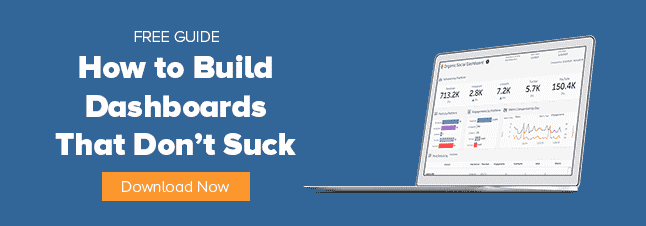
A client of ours asked me a great question about marketing attribution recently:
How can you tell if your media impressions are helping create more conversions? How do you know if someone who saw one of your ads (but didn’t click it) goes to your website and converts later?
Now, this might seem like an easy question to answer. Can’t media platforms like Facebook Ads or LinkedIn track conversions from the campaigns they serve? Isn’t that part of their reporting?
Can’t You Just Look at the Campaign Report in the Media Platform?
Well, yes and no. It’s tricky when you’re measuring a multi-channel marketing campaign.
Yes, media platforms can and do count conversions on your website if the tracking is working as intended. But it’s a bad idea to rely on conversion metrics from a media platform when it comes to multi-channel campaigns If you want to demonstrate overall performance for the business.
Media platforms tend to be greedy when it comes to conversions. Let’s say you saw a company’s ad on Facebook yesterday morning, and another on LinkedIn in the afternoon. Today, when you buy something on that company’s site, both Facebook and LinkedIn will say they generated a conversion … even though the company only made one sale.
Using Web Analytics to Measure Cross-Channel Conversions
Google Analytics (or another web analytics tool) can help reduce the noise around conversions. Assuming your contact forms, online store or content downloads live on your site, then Google Analytics becomes the authority for counting conversions in your marketing funnel.
Unfortunately, you can’t rely on Google Analytics alone for marketing attribution because its reporting is based only on clicks to your website. It can tell you what users are doing on your site. It can tell you where your visitors come from. But it can’t tell you what role impressions had in creating demand, and that’s a big blind spot.
So, how do you bring together the impression data from your media platforms and the conversion data from your web analytics?
Unite Media Impression and Web Conversion Metrics with Data-Driven Attribution
Data-driven attribution is the first step to understanding the true channel value of marketing investments in a cross-channel campaign.
With our clients, our ChannelMix platform aggregates all media data and web performance data including metrics such as — impressions, clicks, costs, date — into one unified view.
Then we apply ChannelMix’s data-driven model, which can award a value to impressions derived from cost, impression volume and conversion behavior. It’s something that a “clicks only” approach to attribution would miss.
The result? You can more clearly see what channels are creating value and how much.
ChannelMix Data-Driven Attribution vs. Google Analytics 360 Attribution
A product like Google Analytics 360 does something similar, but it might not be the right fit for everyone. For starters, you might not have enough data to meet the minimum threshold for GA360’s data-driven attribution — 400 conversions per conversion type with a path length of 2 or more interactions, along with 10,000 paths in the selected reporting view.
Another shortfall of GA360 is the impressions included in the model are only based on the Google family of products. Our ChannelMix data-driven attribution approach takes into account data from any source, making it a holistic solution for any marketer. Plus, we have a team of data scientists, data engineers and other experts who will make sure the data-driven model is aligned to your business goals.
Attribution modeling can be a tricky topic, so if you’ve got more questions, we would love to hear from you!
Multi-Channel Attribution Made Simple
Alight’s end-to-end analytics solutions feature multi-channel attribution models, built right into Power BI or Tableau, to help you reduce the time and cost to generate a conversion. Schedule a free solution consultation with our team!

